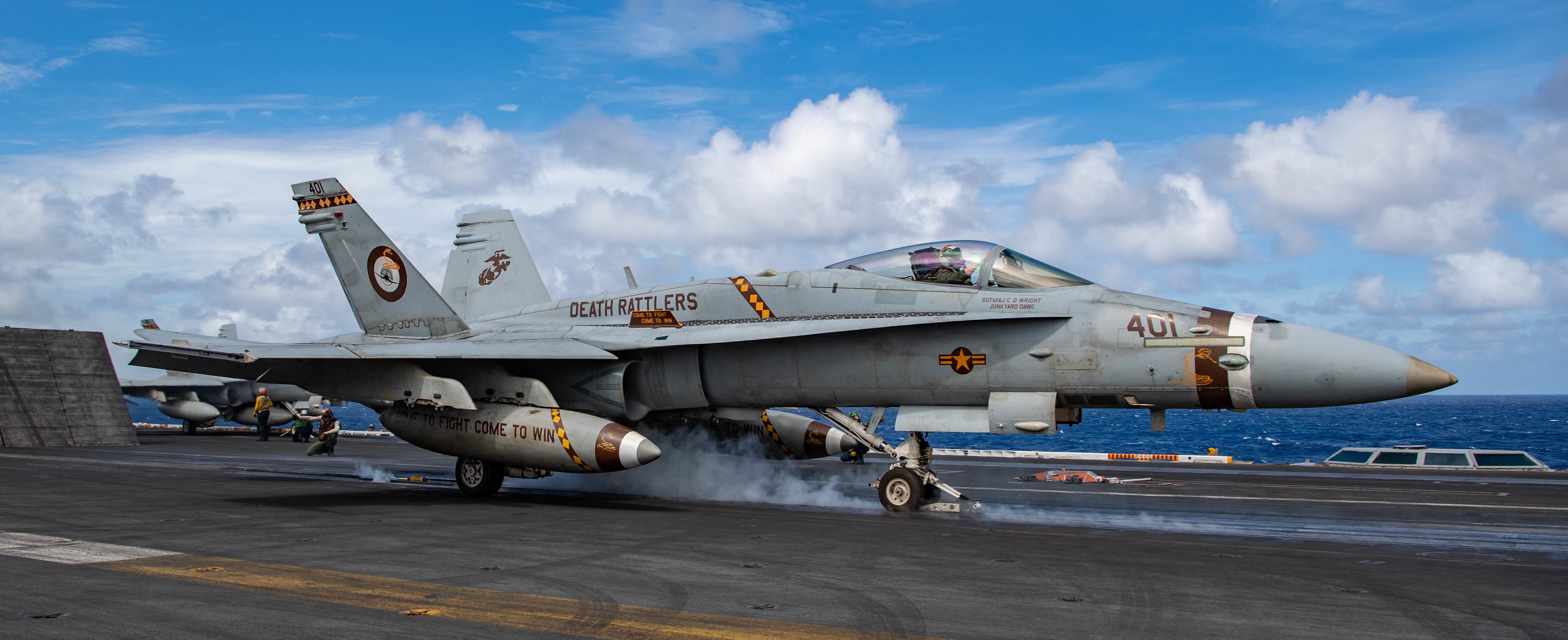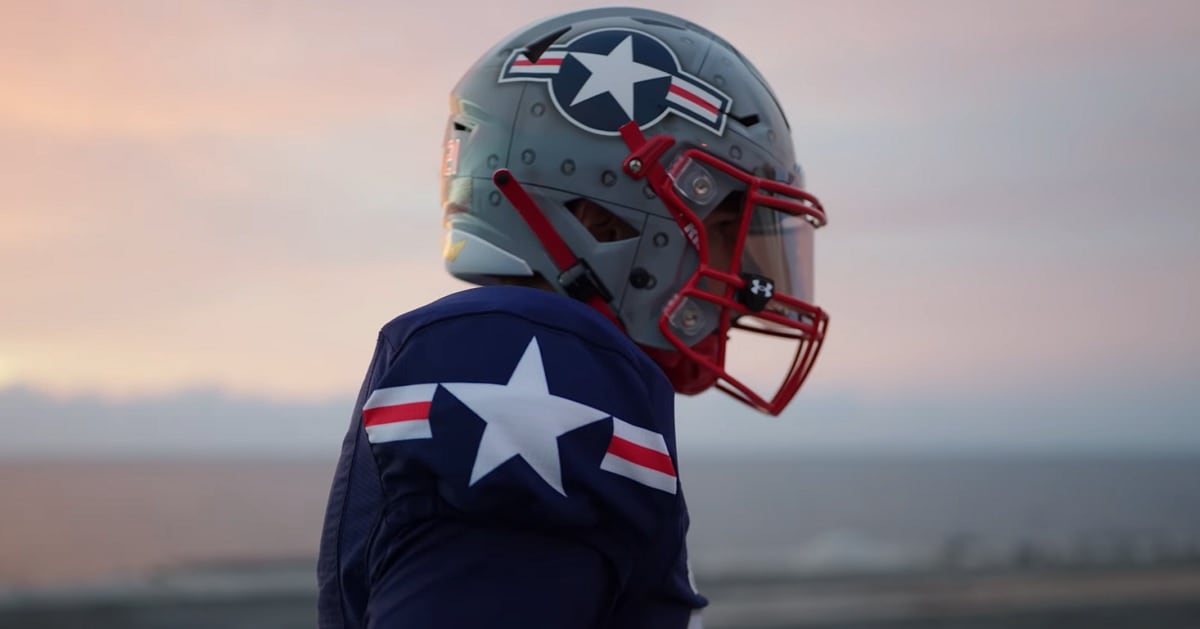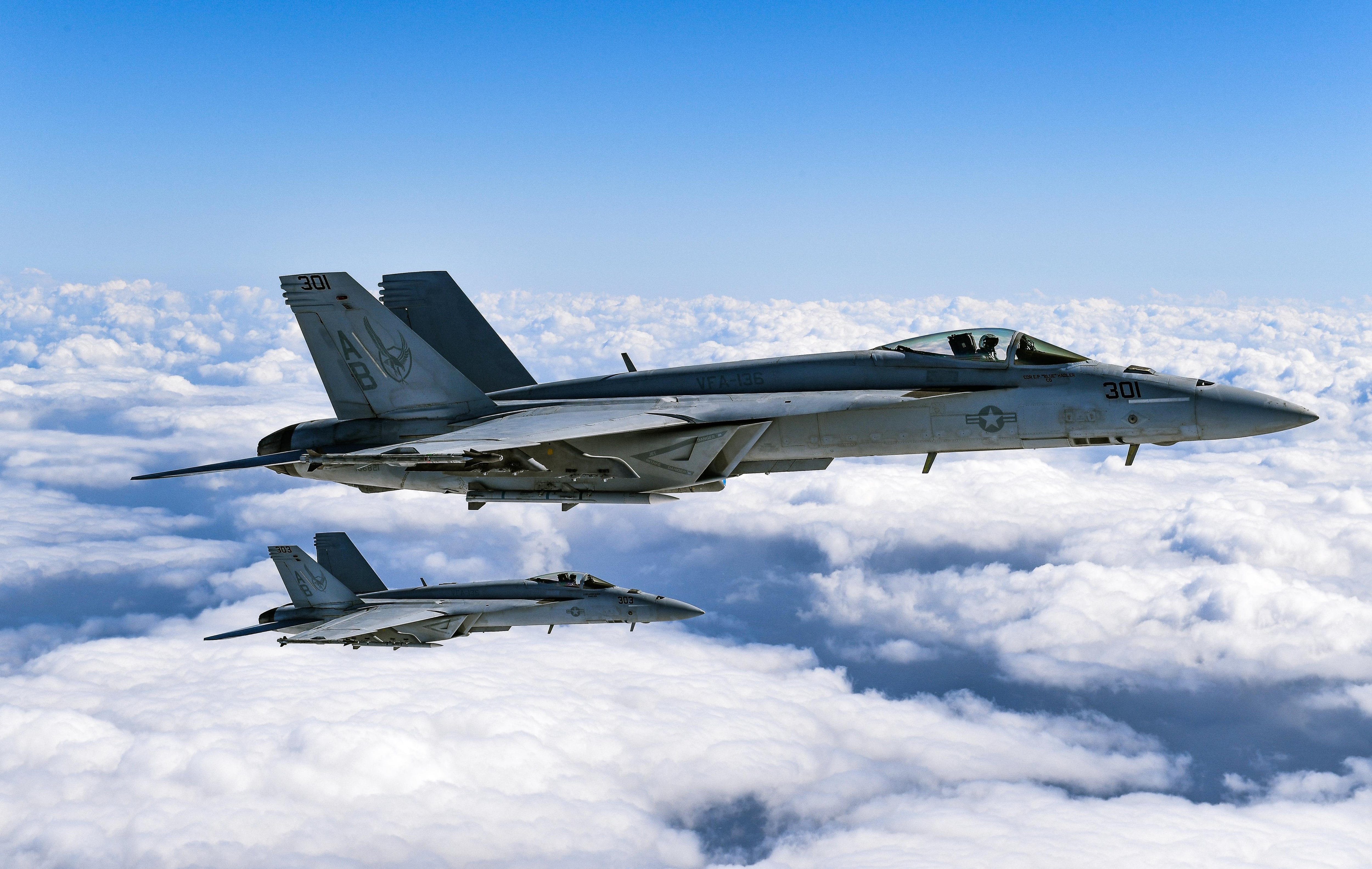USS INTREPID, HUDSON RIVER, NEW YORK — At first glance, the Naval Academy’s red, white and blue 2021 Army-Navy game uniforms appear to be mostly Independence Day-inspired. They sport a navy blue background with a white star on each shoulder, sandwiched between red and white stripes, as an ode to the Navy’s traditional military aviation symbol, or roundel.
The inspiration for the midshipmen’s uniforms this year isn’t merely patriotic colors — it’s the Navy’s iconic F/A-18E/F Super Hornet fighter jet.
The F/A-18 Super Hornet — hand-painted on each player’s helmet — has been the backbone of Navy tactical aviation operations since it entered operational use in 1999, replacing the F-14 Tomcat.
The Super Hornets are capable of aerial reconnaissance, aerial refueling, close air support, day and night precision attacks, fighter escort and defense suppression. The Blue Angels, the U.S. Navy Flight Demonstration Team, upgraded to F/A-18E’s, the one-seater version, and F’s, the two-seater, prior to the 2021 show season.
The aircraft’s forerunner, the F/A-18 Hornet, was the nation’s first all-weather fighter/attack aircraft, designed for traditional close air support operations. The F/A-18 Hornet was first used operationally in 1983 by the Marine Corps, with the Navy adopting the now iconic fighter jet a year later in 1984. The last Navy F/A-18 Hornet flew operationally for the final time from NAS Oceana on Oct. 2, 2019.
RELATED

Hornets were flown by Navy strike fighter squadrons, Navy and Marine Corps Reserve squadrons and by the Blue Angels and are still flown by Marine Corps fighter attack squadrons.

The fighter jets proved themselves during Operation Desert Storm, not only while being successfully used to shoot down enemy fighters, but to also carry out bombing strikes in the same mission.
The jets were known to take direct hits from surface-to-air missiles and still be able to fly again the next day after being repaired, according to the official Navy website.
They have also been key during the Global War on Terror, having been used in Afghanistan, Syria and Iraq.
While there are many Naval and Marine Corps units that fly Hornets and Super Hornets, the Strike Fighter Wing from the U.S. Atlantic Fleet is featured on this year’s jerseys. The wing, based out of Naval Air Station Oceana in Virginia Beach, Virginia, encompasses more than 16 operational fighter squadrons.
On average, each squadron contains 10-12 Super Hornet aircraft, around 20 officers and nearly 200 enlisted aviators.

America has a fleet of 11 nuclear-powered aircraft carriers that can deploy more than 40 Super Hornets at a time, and according to the Navy, the F/A-18E/F Super Hornet will remain at the forefront of aviation operations until its planned sundown in 2030.
Note: Travel accommodations for Army Navy Game coverage were provided by USAA, a military-focused insurance company.
Rachel is a Marine Corps veteran and a master's candidate at New York University's Business & Economic Reporting program.




